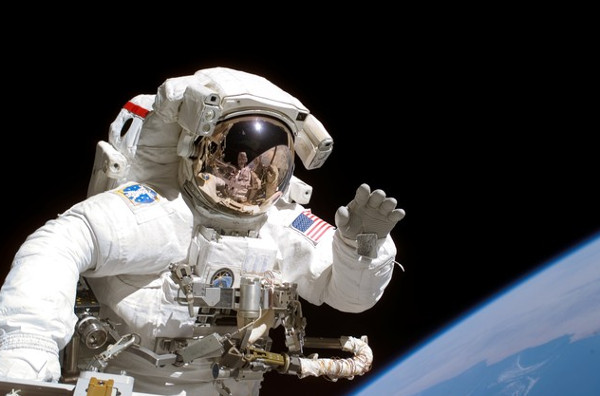How to become an astronaut?
We are often familiar with the image of astronauts working in space. However, there is a fact that few people noticed: most of the time in their careers spent on training and underground tasks.
Conditions to become an astronaut
To be able to perform space missions is not a simple thing. And if you've ever dreamed of being an astronaut, you know that it's not an overnight affair. It took years of training and ground missions for someone to have enough experience for a space mission. Many of them cannot fly even once and bid farewell to their dreams forever. The percentage of candidates who pass the training to become a true astronaut is very small.
So, how difficult is the road to becoming an astronaut? Following, we will introduce how NASA recruited astronauts for their missions.

Becoming an astronaut is not an overnight thing.
Selection of candidates
The first step to becoming an astronaut is that you must be trained to gain experience in the relevant fields. The candidates are divided into two categories: military and civilian candidates. Military candidates will apply for applications in their work units. Each unit will have a separate process. Meanwhile, civil candidates apply directly to NASA.
In education, NASA wants its astronauts to have at least a bachelor's degree in engineering, biological science, physics or math. Some exceptions can be accepted as geographic or airline management. Many NASA astronauts have a master's degree, some have been doing postdoctoral research in their field.
In terms of work experience, 3 years is the minimum number that NASA requires their candidates to work in relevant professional fields. A military candidate is more favored by experience. Meanwhile, if they were a jet pilot, they had to reach at least 1000 flight hours. Persons who have earned a master's or doctoral degree can reduce the number of years of experience required.

Health check for astronauts.
Next round of records is a health check. These are the minimum requirements:
- Vision 20/20 (natural or wear glasses are OK).
- Blood pressure does not exceed 140/90 in a sitting state.
- Height between 1m60 and 1m90.
The ultimate goal of a health check is to assess whether you have the best condition for emergencies such as returning to Earth or emergency in orbit.
Besides checking status, there will be a psychological test by interview. Applicants must have both physical and psychological stability to choose . NASA also wants to exploit flexible candidates, with good teamwork skills and an important passion for exploration.
Road to flight
Passing the selection round doesn't mean you're ready to become an astronaut. The road to the first flight was very difficult. You will receive training for at least 2 years. The training course will equip basic knowledge about ISS International Space Station and space travel.

Practitioners are allowed to practice with the zero gravity environment emulator.
Skills include: professional diving, survival and swimming skills . You will be exposed to high and low atmospheric pressure, participating in non-gravity environmental simulator exercises. Besides, there are training courses on communication, Russian and some other subjects.
Even after graduation, many practitioners were unable to make the first flight for many years. They must continue to practice more with emulator missions. Simulation walks in NASA's lab. The first blood experience will be formed during this period.
Future astronauts will be sent to specialized facilities to form their own skills. For example, a course with a Canadian partner is just to control a robot arm in space. In addition, during training, they must maintain a certain number of flight hours with T-38 aircraft each month.

Underwater exercises at NASA training center.
It usually takes several years to wait for the first flight. They will have to read the documentation of the actual devices. Use them in the simulator. These training courses take place around the world. They have to practice their coordination skills with the group.
NASA uses computer systems and even physical space to set up simulated flights. Future astronauts must practice how to prepare meals, arrange furniture, move them in space, manage waste, use cameras and their professional experiments.
As mentioned, it took a few years to reach the first flight. If a student completes a training course and practices simulation, he will fly. Besides, the professional factor is also constantly trained. Flights on the ISS International Space Station lasted an average of 6 months. Others last up to 1 year.Most of the time astronauts spend on scientific tasks. Therefore, they also need a great passion for science in this special environment.
- Journey thousands of people choose one to become NASA astronaut
- Now you can train yourself to become an astronaut through ... smartphone
- NASA presents new astronaut outfit
- Underwear company revealed about astronaut's attire
- Astronaut eat?
- You will be surprised to know what astronauts eat every day
- 2013 - Russia sends female astronauts into space
- The US and Russian astronauts have returned safely from the ISS Station
- Robots will replace astronauts
- The first African-American traveler set foot on ISS
- The only Korean astronaut quit his job
- Push button helps astronaut astronaut return to ship
 'Fine laughs' - Scary and painful torture in ancient times
'Fine laughs' - Scary and painful torture in ancient times The sequence of numbers 142857 of the Egyptian pyramids is known as the strangest number in the world - Why?
The sequence of numbers 142857 of the Egyptian pyramids is known as the strangest number in the world - Why? History of the iron
History of the iron What is alum?
What is alum?